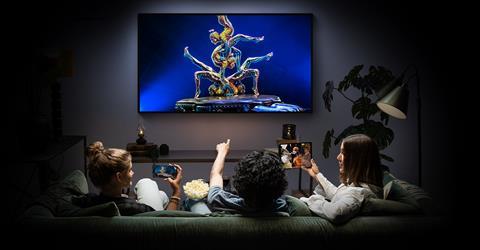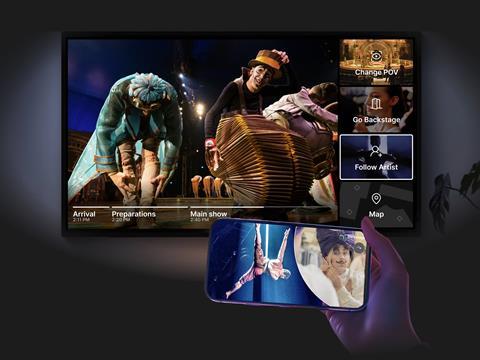Danny Theis, CEO at Imagien, looks at how technology could change how live events are consumed

For decades, the magic of live entertainment has been rooted in the thrill of being there. Feeling the pulse of the crowd and the power of the performance. But as the world moves deeper into digital, a new challenge has emerged: how do you translate the visceral energy of a live show into an at-home experience that feels just as powerful?
The reality is that most live shows, no matter how spectacular in person, often lose impact on a traditional screen. A concert on TV or a livestreamed event can feel distant, and viewers now expect more. They want to explore, choose, connect and participate.
From passive viewing to active immersion
Audiences no longer want to simply watch. They want to shape their experience and engage with it; a shift which is being driven by three key trends.
Greater interactivity
Audiences are moving away from passive viewing. Fortnite’s Remix: The Finale drew 14.3 million live participants by turning a concert into an interactive gaming event. TikTok’s In The Mix concert allowed fans to interact directly with the show, making them part of the experience, not just viewers. The result was a staggering 9.6 million live viewers and 33.5 million unique viewers.
Multi-screen engagement
Second-screen viewing is becoming the norm. Companion apps, alternate feeds, and real-time stats have become the standard, with Formula 1’s Ultimate F1 Live Immersion offering driver perspectives and multiple angles, enabling unprecedented, hands-on immersion alongside the live race.
A growing appetite for storytelling
Audiences are craving character-driven, behind-the-scenes storytelling. Series like Drive To Survive and Full Swing spotlight the personalities, pressures, and rivalries, which are often more captivating than the main event. The success of these shows has even helped boost interest and attendance at live events.
New commercial opportunities
This transformation presents a significant commercial opportunity. Since the pandemic, entertainment brands have started moving beyond traditional income streams like ticketing and merchandise. Interactive at-home experiences allow them to reach global audiences, extending their reach into new geographies and demographics beyond the physical venue.

At the same time, viewers are seeking more premium and meaningful experiences that they’re willing to pay for. Instead of passively consuming content, they’re choosing high-quality moments to enjoy with others. Pay-per-view or pay-per-experience models are becoming more relevant, giving people the chance to enjoy rich, shared events from home.
An example of this evolution is Kurios: in Parallel!, a new interactive and multi-screen version of Cirque du Soleil’s Kurios: Cabinet of Curiosities. Designed for digital audiences, it invites viewers to choose their path, follow different characters, and explore the performance in new ways. Built on the Parallel! platform developed by Imagien, the experience shows how interactive storytelling can reshape live entertainment for the screen.
Data as a creative tool
Digital experiences also bring the advantage of data. For the first time, rights holders can access real-time insights into how audiences interact with their content. From which scenes they watch most closely to where they tune in from, this data provides valuable feedback, informing decisions around marketing, content optimisation, pricing and audience segmentation across markets.
The challenge of scale
While the opportunity is huge, delivering immersive digital experiences at scale isn’t simple. Many entertainment companies face barriers in terms of infrastructure, distribution, and technical capability, slowing progress and opening the door to competitors. Delivering interactive, immersive experiences at scale demands excellence across devices and regions. Low-latency, high-quality streaming, synchronised multi-camera feeds, real-time cloud workflows, and apps that perform even on older hardware are no longer nice-to-haves; they’re essential for global success.
What comes next?
The future of live entertainment isn’t about more content. It’s about creating deeper, more personal, and unforgettable experiences that make the audience feel like they’re not just watching the show but being part of it. The brands that succeed will be those who embrace interactivity, harness the power of data, and make digital feel even more magical than being there live.

Danny Theis is CEO of Imagien





No comments yet